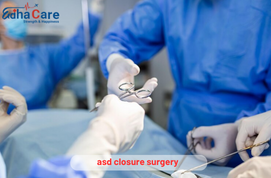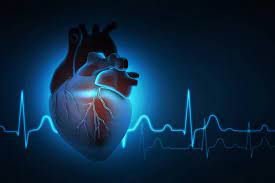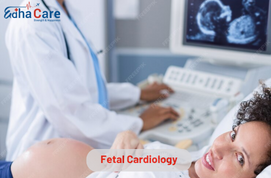ASD Closure Surgery

(ASDs) Atrial septal defects are congenital heart defects that result in a hole in the the septum, or the wall, separating the upper chambers of the heart, or atria. ASD closure surgery is a procedure used to repair ASDs. Sealing the hole and stopping irregular flow of blood between both atria is the goal of this surgery, which will decrease symptoms and avoid problems including heart failure, cardiac arrhythmias, and strokes that are linked to ASDs. Depending on the location and extent of the defect, either surgically minimally invasive or open heart surgery techniques may be used to accomplish the procedure. Using a tissue or synthetic patch, the surgeon seals the incision during the surgery.
Book an AppointmentAbout ASD Closure Surgery
asd closure Symptoms : The seriousness of the atrial septal defect (ASD) and how it impacts heart function determines the signs and symptoms. Smaller ASDs could not trigger any symptoms, but large faults might cause apparent signs including exhaustion, difficulty breathing, and problems gaining weight, especially in infants. Recurrent respiratory infections such as pneumonia may also manifest, as well as palpitations or heartbeats that are erratic. Elevated heart and lungs pressure can lead to swelling, or swelling of the feet, legs, or abdomen. Frequent infections of the respiratory tract during childhood could be a sign of an ASD. On the other hand, ASDs might not exhibit any signs and are only discovered by chance during medical tests.
asd closure causes : Congenital heart defects, also known as atrial septal defects (ASDs) can have a variety of causes and manifest all through the development of the fetus. The wall separating the upper chambers of the heart (atria), the septum, could not have been fully formed or closed during embryonic growth. This is one common explanation. The atria's irregular flow of blood caused by this partial closure results in the development of ASD. Since certain genetic diseases or chromosomal defects might raise the incidence of ASDs, genetic variables may possibly be involved. Furthermore, in certain cases, environmental factors including a mother's exposure to certain drugs or toxins while she is pregnant may have a role in the growth and development of ASDs. Even though the precise etiology of ASDs is not always understood, their development may be influenced by a mix of environmental and genetic variables.
asd closure remedies : Repairing the hole in the septum, the membrane separating the upper chambers of the heart is the primary treatment for a condition called atrial septal defect (ASD). This prevents aberrant flow of blood between the atria. Surgery closure or minimally invasive methods like transcatheter ASD closure can accomplish this. During open heart surgery, the doctor uses synthetic components or tissues from the patient's body's tissues to fix the defect. As an alternative, transcatheter closing entails passing a catheter through a groin blood vessel and covering the defect with a closure device to seal it off. Small ASDs sometimes don't need immediate action; rather, they just need to be continuously monitored.
Procedure of ASD Closure Surgery
The procedure for atrial septal defect (ASD) closure typically involves the following steps:
Preoperative Evaluation: The patient undergoes comprehensive medical assessments, including physical examinations, imaging tests (such as echocardiogram), and possibly cardiac catheterization, to assess the size, location, and severity of the ASD.
Anesthesia: To guarantee that the patient is unconscious and pain-free during the treatment, general anesthesia is administered.
Access: To gain access to the heart and blood vessels, the surgeon creates a tiny incision in the chest or groin.
Catheterization (Transcatheter Closure): A thin, flexible tube known as a catheter is directed to the heart via a blood artery in the groin for minimally invasive transcatheter closure. The defect is visible with contrast dye, and fluoroscopy (X-ray) is utilized to help position a closure device over the ASD.
Surgical Closure: If surgery closure is required, the doctor conducts open heart surgery. When the chest cavity is opened, the beating heart is visible. The surgeon next repairs the ASD utilizing either artificial material or the patient's own tissue.
Closure Verification: The surgeon uses imaging methods such as echocardiogram or angiography to verify the closure of the ASD and assure there are no residual leaks.
Closure of Incisions: After the ASD closure has been confirmed , the patient is moved to the recovery area where they will be monitored while the incisions are stitched together with sutures or adhesive strips.
During therapy, patients remain closely monitored in a medical facility for a period to ensure adequate recovery and healing. They might be given medicine to relieve the discomfort and prevent illnesses. Additionally, they will have periodic visits to assess their achievements and look for any problems.
Require Assistance?
Get A Quick Callback From Our Healthcare Experts






